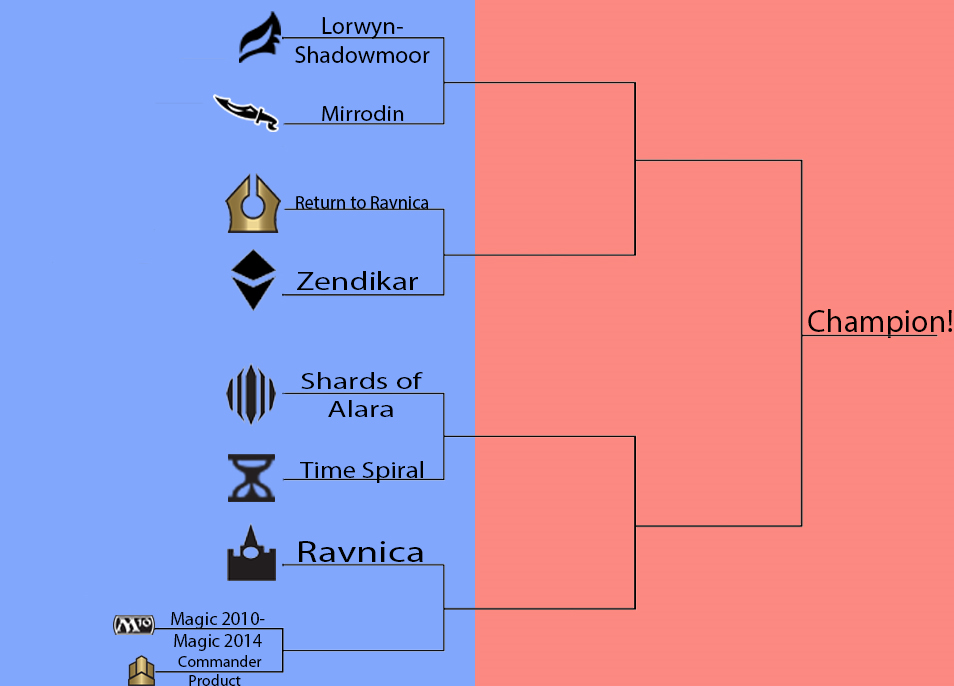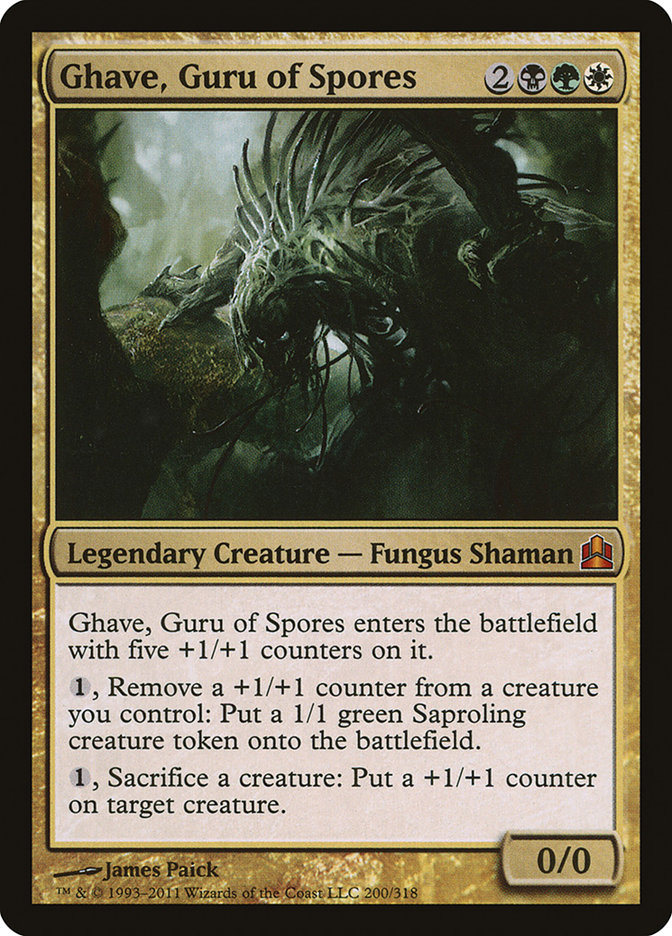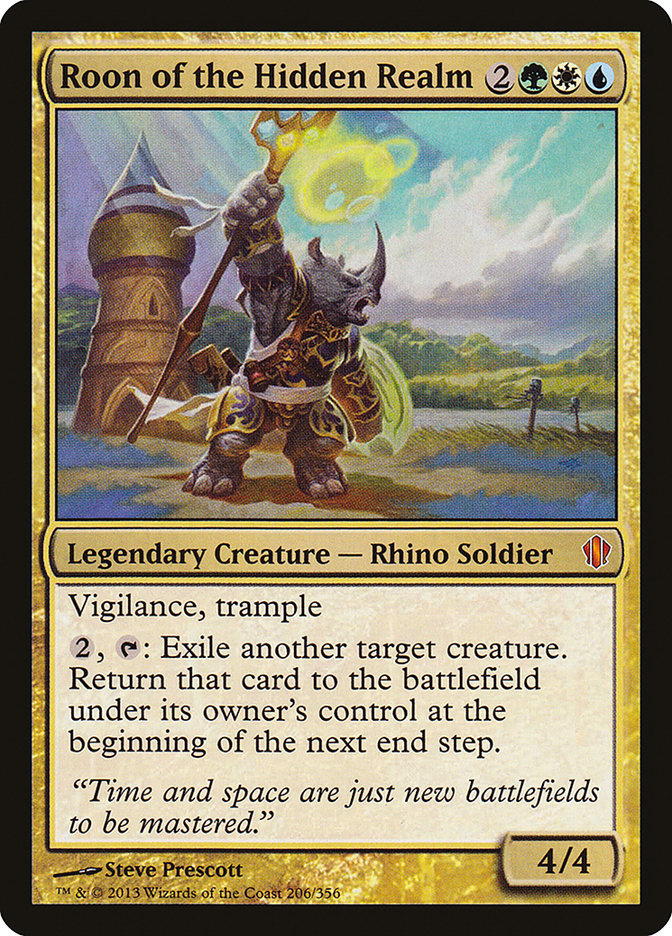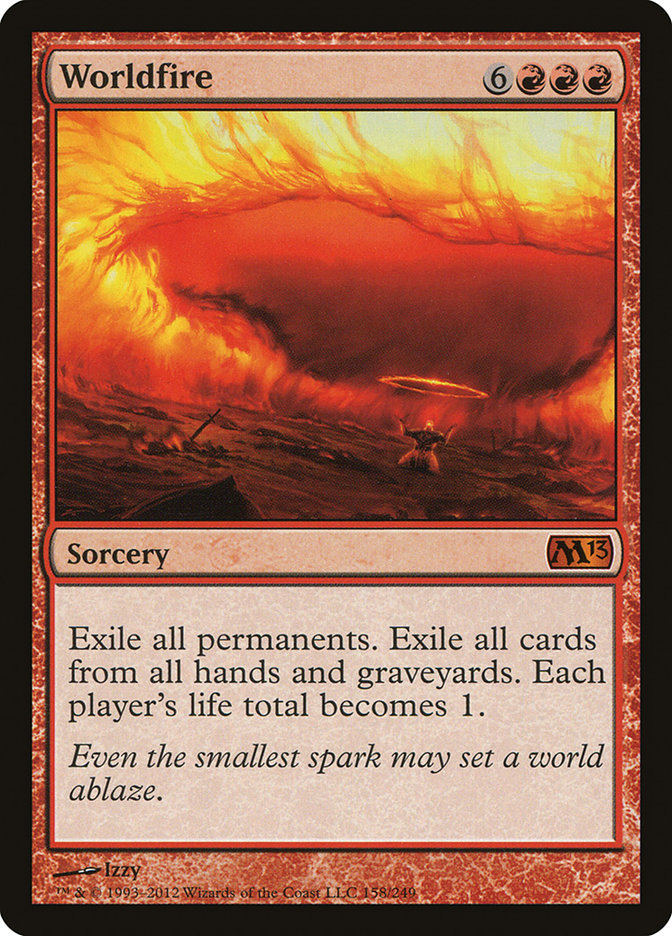In today’s Battle Of The Blocks, the Commander preconstructed decks face off against the combined weight of the new core sets comprised of Magic 2010 through Magic 2014. The Commander format rose from humble beginnings, traveling all the way down from Alaska with Sheldon Menery and then spreading through the judge program like wildfire. It wasn’t until June 17th, 2011, when the official Commander product was released into major retailers and local card stores across the world, that the greatest push for the Commander format happened.
The release of the Commander product spread the greatest casual format of all time to Magic players everywhere and brought a horde of new casual and competitive Magic players into the fold, injecting new ideas and concepts into the Commander metagame. These preconstructed decks each have two new commanders per deck and a total of 102 new cards between all ten builds that are both Legacy and Commander playable. This article will include both the 2011 product and the most recent 2013 product.
Magic 2010 was announced as a bold new direction for core set design, coupling 112 new cards to a host of reprints designed for the current Standard. The new direction of the core sets gave the Wizards of the Coast design team freedom to play within the classic tropes of a fantasy universe and create cards that wouldn’t otherwise fit in the restricted flavor of a set like Theros or Innistrad. Using this new freedom of creativity, designers used broad strokes to create impactful spells that lacked flavor but filled holes in a Standard format that couldn’t be addressed otherwise.
These hole-filling spells are just as important when it comes to Commander because they allow deckbuilders to fill their decks with spells that either provide a unique effect or increase the redundancy of a needed spell through functional reprinting. Due to the significance of these sets and the staples printed within them for our Commander contest, I’ll be tying the Magic 2010-2014 sets together as a single influential block for the Commander metagame.
Let’s take a quick look at the current bracket:
The winner of this battle will go on to face Ravnica in the Top 8 of the Battle Of The Blocks. Remember, these battles are to decide which block contributed the most to Commander, not the best block in all of Magic. They will be compared in the usual five categories: Staples, Commanders, Strategies, Flavor, and The Bad.
Staples
Five Notable Staples From M10-M14
1) Cultivate
2) Cycle of Titans
3) Allied Color Check Lands
4) Acidic Slime
5) Rune-Scarred Demon
There is a high bar for creature quality in Commander, and one of the easiest ways for a creature to make the other 99 cards in a deck is with a great enters-the-battlefield trigger that makes it worth the inclusion even if it doesn’t attack. The cycle of Titans in M11 is a great example of this concept because they produce a spell’s worth of game-changing utility whenever they enter the battlefield or attack an opponent for a sizeable six damage.
Akin to the Titans of Magic 2011, the six-power Rune-Scarred Demon of Magic 2012 makes up for its hefty mana cost with a free Demonic Tutor strapped to its evasive body. This impactful enters-the-battlefield trigger is easily abusable by an adept Commander deckbuilder through reanimation effects or ways to Flicker the creature in and out of play to continually benefit from the enters-the-battlefield ability.
Finally, it’s impossible to cast a spell without the mana to do so, and Cultivate is the banner Commander players unite beneath. This simple green common ties together any dysfunctional mana base with efficient land selection and powerful land ramp. This basic land love from the Magic 2010-2014 sets continues through the allied check lands that reward a cheaper mana base with untapped dual lands for an insanely low price due to heavy reprinting.
Five Notable Staples From Commander Product
1) Command Tower
2) Spell Crumple
3) Chaos Warp
4) Martyr’s Bond
5) Scavenging Ooze
The Commander preconstructed decks are tailored for the format emblazoned on their cardboard boxes, bringing spells that excel within the battlefield of Commander. The only format Command Tower can function in is Commander, so it makes sense that it’s the start of every multicolored mana base, from the ambitious five-colored Progenitus decks to the sneaky blue and black Sygg, River Cutthroat decks.
One of the only ways to truly deal with a general is to place it on the bottom of an opponent’s library. Spell Crumple offers an easy solution to overpowered generals in the format for the same price as Cancel, and Chaos Warp will turn problematic generals into permanents that are easier to deal with at instant speed.
Cards To Consider
We haven’t had much time to experiment with the new Commander 2013 decks, but the card that deserves more recognition is Tempt With Discovery. This innocent green sorcery features the new mechanic “tempting offer,” which will take opponents by surprise as they realize that the card fetches more than basics. The same reason Primeval Titan was so strong is why I heavily suggest this card since being able to grab more than one non basic for such a low cost is astonishingly powerful and fits in with any multicolored green strategy.
From Magic 2013, Void Stalker pulsates into view as a removal spell in a color that is lacking in ways to permanently deal with threats already on the board. Its extra utility in shuffling in generals is not to be undervalued and is one of the reasons this jellified blue rare should earn a place in most mono-blue decks.
Verdict: The starting five for the Commander preconstructed decks are imposing, but the quality of staples severely drops off after these five shining stars. The Magic 2010-2014 sets have no problem offering up more staples after the first five, with other notables like Boundless Realms, Lurking Predators, and Warstorm Surge barely missing the list.
Commanders
The Commander preconstructed decks feature some of the most important legendary creatures of all time. Simply put, without the generals printed in Commander 2011, the only generals available in the wedge color combinations are the Planar Chaos Dragons and Doran, the Siege Tower. The best part is that these commanders are fantastic! Ghave, Guru of Spores; Riku of the Two Reflections; and Nekusar, the Mindrazer each bring something unique to the format and allow players to build new decks around these irreplaceable generals.
Because the Commander preconstructed decks are standalone products, the Wizards of the Coast design team wasn’t limited to flavor restrictions in their legends, which allowed them to envision these new commanders as figureheads for specific strategies instead of champions of the overarching story of Magic. The new wave of legends in the Commander 2013 preconstructed decks mirrors this design ideology with generals that are manufactured to play with specific approaches, such as the Flicker-based Roon of the Hidden Realms and the life gain-loving Oloro, Ageless Ascetic.
There are only five legends in Magic 2010-2014, yet each one sees considerable play in Commander. Following a similar design principle as the Commander preconstructed decks, these flavor-unbound commanders are stripped down to tell a simple story within a single card. Krenko, Mob boss is a leader of a horde of goblins, and Talrand, Sky Summoner calls flying drakes to his aid. It’s pretty simple.
These one-dimensional commanders lead to decks that utilize these simple strategies effectively, drawing their strength from the basic abilities of their general. A Krenko, Mob Boss deck exploits the easily created horde of Goblins to terrorize an entire multiplayer table, while a Talrand, Sky Summoner deck rapidly fires off an army of Drakes while controlling the flow of the game with cheap instants and sorceries, overwhelming opponents in a flying mass of teeth and wings.
Verdict: The Commander product brought 25 new and exciting generals to the Commander format. Magic 2010-2014 brought five. Commander product wins.
Strategies
When looking at Magic 2010-2014, its additions to the strategies within the Commander format are greater than just its mythic rares. Magic 2014 brought an all new horde of Slivers that pushed the already strong tribal deck over the top with increased redundancy at the most important slots: Manaweft Sliver, Syphon Sliver, and Galerider Sliver. Each deck needs spells that either enable the strategy or close out games, and life-gain decks can turn to Magic 2010-2014 for both.
The strong finishers, Serra Ascendant and the newly printed Archangel of Thune, act as life-gaining dragons, while cards like Angelic Accord, Rhox Faithmender, and Ajani’s Pridemate act as slower methods to attain a victory. The basic fantasy nature of these sets leads to a love of classic fantasy creature archetypes, and Tribal decks found some love with the printing of completely new lords for artifacts, Goblins, Elves, Illusions, Merfolk (twice), Knights, Zombies, Vampires (twice), and the filler lord Adaptive Automaton.
The Commander preconstructed product stumbles into this section without much to offer. Token decks grabbed some decent token producers in Tempt With Vengeance and Alliance of Arms that pair up nicely with the symmetrical Primal Vigor and Crescendo of War. Mill decks also received the underwhelming Riddle Keeper and an actual win condition in Sewer Nemesis, but that’s about it. The issue with these products when it comes to this section is that the cards that are the most useful for a specific strategy are the actual legendary creatures. Generals like Nekusar, the Mindrazer; Zedruu the Greathearted; and Ghave, Guru of Spores are fantastic for the painful wheel, Donate, and token strategies respectively, but the cards in these sets that actively help those deck concepts are few and far between.
Verdict: The focus on the general zone in the Commander preconstructed decks hurts them in this section because they have such a small amount of cards to offer for specific strategies that go in the other 99. Magic 2010-2014 takes this section handily with some great additions to popular deck concepts.
Flavor
In a section that celebrates the Vorsothian elements of the blocks in our competition, these sets don’t bring much to the table. Instead of strict flavor guidelines, Magic 2010-2014 celebrates the fantasy elements of the game and stays detached from a specific plane in the Magic multiverse. This is clearly shown through the five legends that appear in Magic 2013—each one is from a different plane within the Magic universe, showing the expanded worldview of these new core sets.
The Commander preconstructed decks are no different, as the generals are from scattered parts of the Magic universe and the cards spring from basic fantasy ideas or from completely different corners of the multiverse. Opening a Commander preconstructed deck is like diving into a mishmash of lore that leaves even the more experienced player out of their depth.
Yet this isn’t a bad thing. By pulling the design focus away from a regimented expert expansion, designers can create pure card design that is reminiscent of the original cards that started the game all the way back in 1993. Cards like Scavenging Ooze and Trading Post enter the battlefield as spells that are easy to understand, fun, and useful in the Commander format. These sets are also great places to continue the story from previous locations, like the return to Innistrad block with the new Curses printed in Commander 2013 and the amazingly flavorful Witch Hunt.
The only dark spot on either of these sets for flavor was the failing of the join forces mechanic. In the Commander 2011 product, a suite of five cards came with the join forces mechanic, an idea to ramp up multiplayer interaction that frankly failed at doing so because the spells effect was forced upon the other players and turned these cool ideas into simple symmetrical spells that rarely grace a Commander table.
Verdict: The flavor in these blocks isn’t a home run by any stretch of the imagination with its basic fantasy theme, but at least it’s consistent. Magic 2010-2014 wins this section because they avoided the pitfalls of a failed mechanic.
The Bad
One of the most controversial bans that the Rules Committee has ever handed down is that of Magic 2011 all-star Primeval Titan. I remember when it was first spoiled and people were surprised by the lack of a single word on the card: basic. The fact that Primeval Titan can fetch nonbasic lands led to his eventual dismissal from the format because whenever he was cast the entire game would revolve around copying, reanimating, and Flickering the 6/6 trampler.
Magic 2013 summoned Worldfire into the world and torched player’s enjoyment of any multiplayer game it was cast in. This ban was expected and important for the health of the format, preventing a spell that absolutely ruins a game and turns an hour of enjoyment into a topdecking war that lasts for ten minutes. Thankfully, the Commander product has avoided any sort of offensive printing. The only possible issue with the Commander product is the implantation of obvious Legacy staples that drive up the price of the product makes it harder for prospective players to acquire specific decks because of these cards made for a different format.
Verdict: Magic 2010-2014 handily takes this section with the printing of the instantly banned Worldfire and controversial Primeval Titan.
Final Verdict
For a quick look at the results from each section, I’ve decided to compile them into a report card for each block with a specific score for each section and a cumulative score for the block as a whole. I’ve stuck to a simple American grading system using letters instead of a numerical scale to keep the competition away from a simple tallying up of the results.
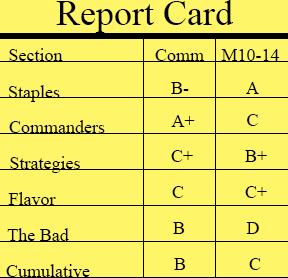
The great commanders of the Commander product are what really separated these two sets and allowed the Commander product to win this matchup! They will take on the original Ravnica block in the Top 8 and duke it out to see who will advance further in the Battle Of The Blocks!

